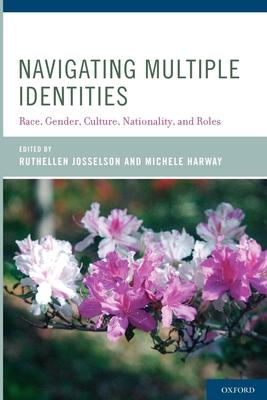Although questionnaires routinely ask people to check boxes indicating if they are, for example, male or female, black or white, Hispanic or American, many people do not fit neatly into one category or another. Identity is increasingly organized multiply and may encompass additional categories beyond those that appear on demographic questionnaires. In addition, identities are often fluid and context-dependent, depending on the external social factors that invite their emergence. Identity is constantly evolving in light of changing environments, but people are often uncomfortably fixed with societal labels that they must include or resist in their individual identity definition.
In our increasingly complex, globalized world, many people carry conflicting psychosocial identities. They live at the edges of more than one communal affiliation, with the challenge of bridging different loyalties and identifications. Navigating Multiple Identities considers those who are navigating across racial minority or majority status, various cultural expectations and values, gender identities, and roles. The chapters collected here by Josselson and Harway explore the ways in which individuals attain or maintain personal integration in the face of often shifting personal or social locations, and how they navigate the complexity of their multiple identities.
| FindBook |
|
有 2 項符合
Harway的圖書 |
 |
$ 4980 | Navigating Multiple Identities: Race, Gender, Culture, Nationality, and Roles
作者:Josselson,Michele(EDT),Ruthellen(EDT)/Harway 出版社:Oxford Univ Pr 出版日期:2012-04-17 語言:英文 規格:平裝 / 15.2 x 22.9 x 1.9 cm / 普通級  看圖書介紹 看圖書介紹
|
 |
$ 3400 | What Causes Men’s Violence Against Women
作者:Harway 出版社:Sage Pubns 出版日期:1999-09-09 語言:英文 規格:平裝 / 312頁 / 23.4 x 15.5 x 1.5 cm / 普通級 |
|
|
圖書介紹 - 資料來源:博客來 評分:
圖書名稱:Navigating Multiple Identities: Race, Gender, Culture, Nationality, and Roles
|











